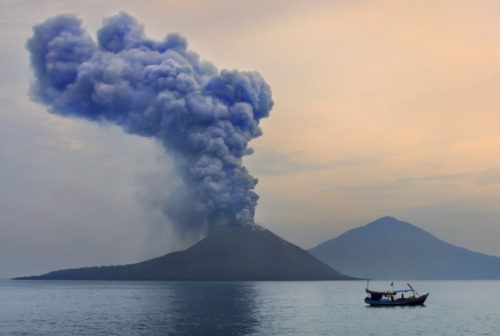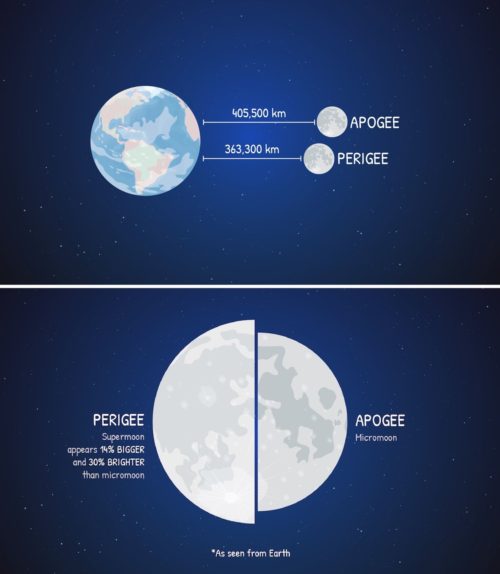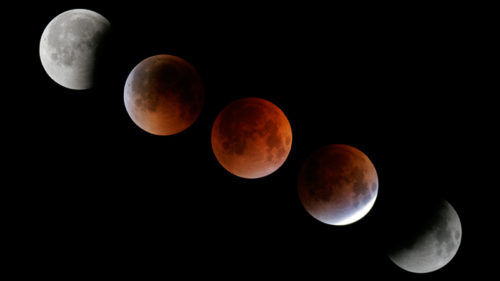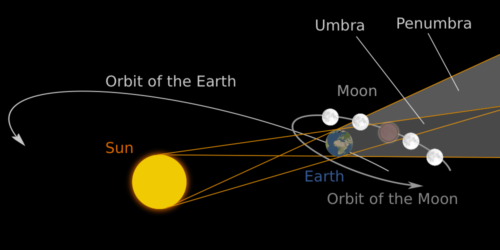Naturalist Notes: See the Super Blue Blood Moon of 2018
On January 31st, 2018 humans across the west will witness a special convergence of three astronomical events tied to the full moon. It’s something so special it deserves its own notable name: the Super Blue Blood Moon. But what’s in a title?
Here’s a Naturalist Note by graduate student Gina Roberti about what is most exciting in our upcoming super-blue-blood moon.
1) A Blue Moon
To get emotionally hyped for the Blue Moon portion of this celestial trifecta, we recommend you listen to the song Blue Moon by The Marcels (a throwback to the year 1961).
The full moon on January 31st will be the second full moon to occur in one month, an event known as a blue moon. A full moon occurs roughly every 29.5 days, and our calendar months are 30-31 days long. On the occasion that the full moon falls in the first two days of the month, it is likely that a Blue Moon will occur at the end of the month (except perhaps in leap years!). The expression “once in a blue moon” is not as rare as it implies, as this phenomenon occurs regularly every thirty-two months.
It is possible for the moon to literally appear blue, but this has nothing to do with an event on our calendar. In 1883, the eruption of the volcano Krakatoa in Indonesia threw enormous plumes of ash into Earth’s atmosphere. Some of the ash particulates were exactly large enough to scatter red light and let other colors to pass through (slightly wider than 1 micron). Through this veneer, the dominant red wavelengths of the sun’s light will instead appear blue. Since the moon reflects light from the sun, it also can appear blue. It is common to see a blue-colored moon after the eruption of any large volcano. Blue moons were reported after the eruption of the El Chichon volcano in 1983 (Mexico), Mt. St. Helens in 1980 and Mount Pinatubo in 1991.

Volcanic eruptions in Indonesia have been some of the largest recorded in modern history. The eruption of Mount Tambora in 1815 led to an unexpected outcome: the invention of the bicycle! The year 1816 was called “the year without a summer” as Tambora’s release of such large volumes of ash persisted for years. The bicycle was introduced as an alternative to horse and buggy because without crops, horses became too expensive to feed. Image and info courtesy of UNESCO.
2) A Super Moon
The full moon on January 31st will also align with a supermoon. You might be thinking, why so many super moons recently? It has to do with the fact that the moon’s orbit around the Earth is not circular, but elliptical. That means it is closer to the Earth at certain times in its orbit and further away at others. From our vantage point on the Earth, this means the moon can vary in size by as much as 12 percent, depending on where it is in its cycle.

When the full moon aligns with the point in its orbit when it is closest to Earth (the perigee), the moon appears up to 14% larger and 30% brighter. Image Courtesy of Space.com.
How common are supermoons? The moon rotates through its orbit (passing its apogee and perigee) every 27.3 days. The phases of the moon (when the moon, from our vantage on Earth, reflects varying amounts of the sun’s light) occur on a separate cycle, every 29.5 days. From time to time, the two cycles synchronize for a few months, and from Earth we see an especially large and bright moon when the full moon occurs near perigee (the closest point to the Earth). The three full moons in December 2017 and January 2018 are all super moons.
3) A Blood Moon
Yay! An eclipse, too!

Photographs of the moon during a lunar eclipse in 2007. Light scattered from the Earth’s atmosphere casts a reddish glow, giving the name “Blood Moon. Image courtesy of Wikipedia.
The full moon on January 31, 2018 will also witness a total lunar eclipse. This eclipse occurs just 1.2 days after reaching perigee, (when the Moon is closest to Earth), so the Moon’s diameter will appear about 7 percent larger than average, making it an “eclipse supermoon.”
The second total lunar eclipse this year will occur in July, when the moon is close to its apogee. The eclipsing Moon in July 2018 will be appear much smaller and less bright than the eclipsing moon in January 2018.
Why are lunar eclipses not more common? Sunlight shining on the solid globe of Earth casts a circular shadow, or umbra, into space. The Earth always casts a large shadow into space because the sun is always shining on the Earth. (As we experience night, the other side of the Earth experiences day.) Even though the moon is relatively small compared with the size of Earth’s shadow, the moon usually misses it. The moon’s orbit around the Earth is tilted, so it usually passes above or below the shadow of the Earth.

When the moon is in the direct shadow of the Earth, only sunlight that has been reddened as it refracts over the Earth’s horizon reaches it — painting it a blood red color. This is a total lunar eclipse. Image courtesy of Pacific Science Center.

The following figure shows how the Moon’s orbit is tilted relative to that of the Earth. A total lunar eclipse occurs when the Moon passes through the umbra of the Earth and turns red. Partial eclipses, when the moon passes through the penumbra are more common than total eclipses. Image courtesy of GLORIA Project.
On Wednesday January 31, 2018, our moon will enter the umbra of Earth’s shadow at 04:51 AM. This is when the moon will turn red, and will last that way for one hour as it passes through the large shadow of the Earth. This eclipse will be a total lunar eclipse, meaning the moon will pass directly into the center of the umbra (Earth’s shadow). Eclipsed supermoons aren’t all that rare, but a total eclipse of a Blue Moon hasn’t occurred since March 31, 1866, 152 years ago!
For more information, see the following article by NASA.
And remember to look to the skies January 31st, especially if you live out west. If there aren’t any clouds, you’re in for a real treat!


